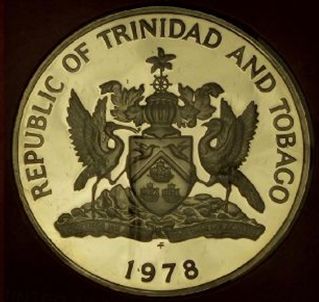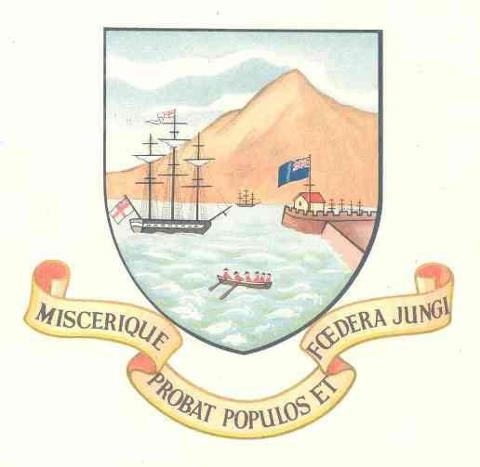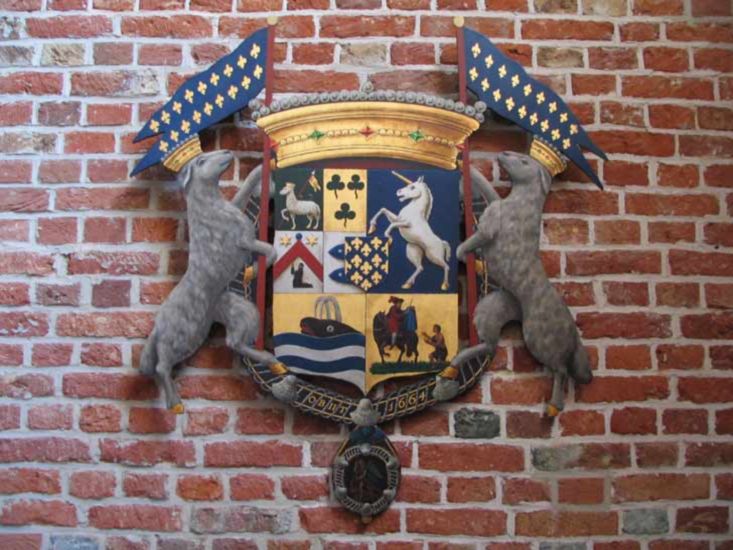National Arms of Trinidad and Tobago
| Heraldry of the World Civic heraldry of Trinidad and Tobago |
THE NATIONAL ARMS OF TRINIDAD AND TOBAGO
Origin/meaning
The arms were officially adopted on 09-08-1962.
The three ships are the fleet of Columbus. Above the ships are two hummingbirds. The red ibis (Eudocimus ruber) is the national bird of Trinidad, standing on a three-topped hill, from which the island got its name (mountain of trinity). The Cocrico (Ortalis ruficauda) bird on the left side is the national bird of Tobago.
| The arms on a coin |
Colonial arms
The Crown Colony of Trinidad and Tobago was formed in 1889, under a constitution that left Tobago with its own legal and fiscal systems. Full administrative amalgamation came in 1899.
The colony used a landscape badge,/arms both on its seal and on the flags used by the colony - the Union Jack used by the Governor, the Blue Ensign used by Government vessels and the Red Ensign used by merchant vessels.
The badge shows an island peak with the sea in the foreground, and square-rigged sailing ships entering a harbour at right. The masoned stone groyne has a flagpole bearing the Union Jack as a prominent part of the design.
The colony attained independence in 1962, but the badge continued to be in use until 1967.
Tobago (Nieuw Walcheren)
Nieuw Walcheren (New Walcheren) was a small Dutch colony on the Southern coast of Tobago. In total 4 attempts of settlement were made, but only in 1654 the colony survived. It was named Nieuw-Walcheren, after the island of Walcheren in Zeeland province. The colony was founded by the Lampsins brothers from Vlissingen and the settlement was named Nieuw Vlissingen (later Lampsinsburg, now the capital of Tobago, Scarborough). Even though the Dutch received Tobago by the Peace of Westminster, the French King also laid claim on Tobago. This was partly resolved by making the Lampsins Barons of Tobago by the French King. This title they used until 1848, even though the colony was conquered by the English in 1666.
The Lampsin family used a swiming whale as arms for Tobago in their family arms. This was derived from the arms of the island of Walcheren. Below the arms of Cornelis Lampsins, Baron of Tobago with in the 3rd quarter the Tobago arms and in the 4th the arms of the island of Sint Maarten as shown in the Grote Kerk in Vlissingen (Netherlands).
Literature : Tobago part : http://nl.wikipedia.org/wiki/Nieuw_Walcheren, image from http://www.sintjacobskerk.nl/rouwborden.htm



